Las Vegas Podiatrist Dr. David Biesinger Recommends Custom Orthotics to Relieve Chronic Foot Pain
At Centennial Foot & Ankle, Las Vegas podiatrist Dr. David Biesinger often recommends orthotics to provide pain relief from bunions, flat feet, high arches, arthritis, and other common foot conditions. These customized shoe inserts are a simple yet highly effective way to help you get back to leading an active lifestyle.
The Importance of Treating Foot Pain Right Away
Living with long-term foot pain is more than just an annoyance. It can be a sign of a deeper underlying issue, such as peripheral neuropathy or arthritis. It’s of the utmost importance to see a podiatrist when experiencing chronic foot or ankle pain.
During your appointment, Dr. Biesinger will conduct a thorough physical exam and, if necessary, imaging tests. An X-ray or MRI can pinpoint the exact area of concern. Once you’ve been properly diagnosed, Dr. Biesinger can address the issue and effectively reduce your pain.
Orthotics can be an effective treatment for foot pain by providing cushioning, shock absorption, and support for misalignments. These shoe inserts reduce pain felt when standing and walking, allowing you to get back on your feet!
The Limits of Over-the-Counter Inserts
Non-prescription inserts, such as Dr. Scholl’s, can provide relief for minor issues. They are typically made of gel, plastic, or foam. They can provide arch support or cushioning in painful areas, like heels, toes, or the entire foot. However, they don’t correct musculoskeletal foot problems.
Types of over-the-counter inserts include:
- Arch supports. Arch supports provide relief for those with high arches or flat feet.
- Insoles. Insoles provide extra cushioning and support for the entire foot.
- Heel liners. Heel liners provide cushioning and relief for heel pain. They are typically recommended for age-related thinning of the foot's natural heel pads.
- Foot cushions. Foot cushions provide a barrier between your foot and your shoe to prevent discomfort. They can be put in specific areas, such as the ball of the foot, to reduce bunion pain.
Over-the-counter inserts are made for the average foot, but they aren’t made to fix chronic issues. That’s where orthotics come in. Orthotics are custom-designed to aid chronic foot pain and support your feet to prevent the worsening of long-term foot conditions.
Types of Custom Orthotics
Orthotics are available by prescription, just like you’d receive medicine from a pharmacy. These medical devices are made specifically to correct biomechanical foot issues. They help with pain from more severe medical conditions, like diabetes, plantar fasciitis, bursitis, and arthritis.
There are three common types of orthotics: rigid, semi-rigid, and soft.
- Rigid orthotics. Rigid, or functional, orthotics are made from hard materials, such as plastic or carbon fiber. They are designed to be worn with regular, everyday shoes, like tennis shoes or dress shoes. They are usually prescribed to ease foot aches and strains.
- Semi-rigid orthotics. Semi-rigid orthotics are a mix of soft and hard materials. They are made with two layers: a flexible top layer and a firm bottom layer. Their main purposes are cushioning, shock absorption, and support for misalignments.
- Soft orthotics. Soft, or accommodative, orthotics are made from soft, compressible materials. They provide cushioning to take pressure off painful areas from conditions like plantar fasciitis or diabetic foot ulcers. These orthotics can be a bit bulky, so prescription footwear may be required to accompany them. They can also be designed for sporting equipment, like ski boots or ice skates.
Conditions That Benefit From Custom Orthotics
Several foot ailments can find relief through the use of orthotics, including the following:
- Flat feet. Orthotics can give arch support to those with flat feet.
- High arches. Orthotics support feet with high arches.
- Plantar fasciitis. Plantar fasciitis, a form of heel pain, can be relieved with orthotics.
- Arthritis. Pain from arthritis can be decreased with orthotics.
- Diabetic neuropathy. Orthotics can relieve pain caused by diabetic neuropathy.
- Foot pain that occurs after knee, hip, or lower back surgery. Orthotics support your feet and provide relief from pain caused by extra stress on your feet after knee, hip, or lower back surgery.
- Sports-related injuries. Orthotics support your feet to speed up the healing of sports-related injuries.
- Ankle sprains. Orthotics decrease pressure and pain caused by ankle sprains.
- Bunions. Orthotics provide cushioning for those experiencing pain from bunions.
- Bursitis. Inflammation from bursitis can be reduced by cushioning the joint.
